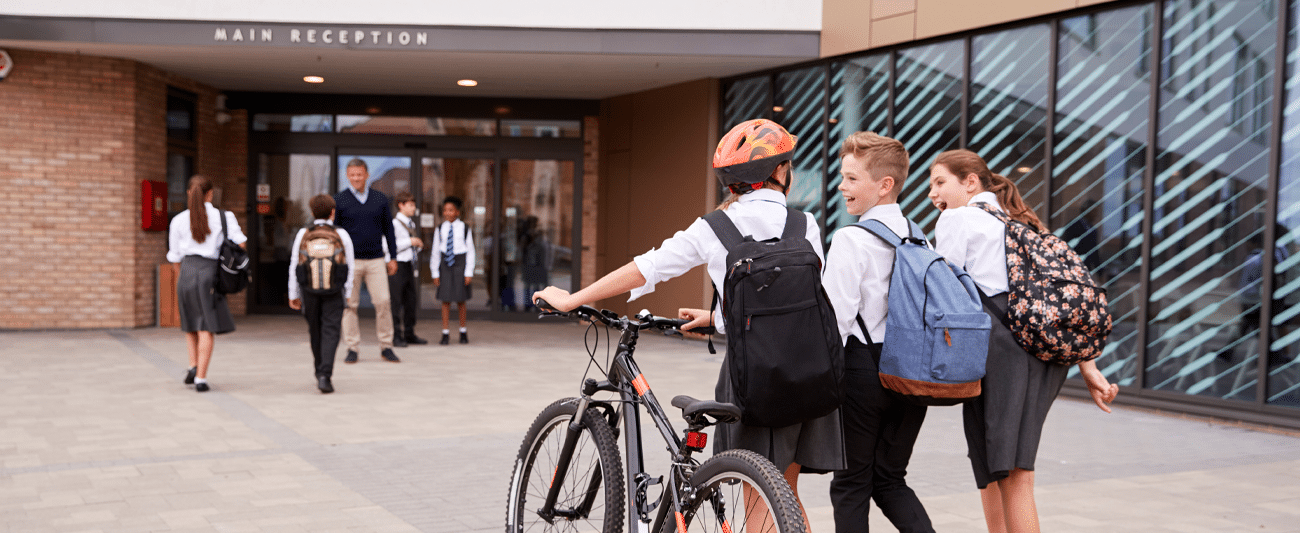
For Year 6 children, their final year of primary school is full of special events such as productions, leavers’ assemblies and residential trips. It is also a time to reflect and look ahead. This can be a very daunting feeling as the first substantial change in education is on the horizon – the transition to Year 7 and ‘big school’. All summer, children will have a mixture of feelings: excitement, apprehension and nervousness. Primary school teachers provide units of work focused on change and managing new emotions within their classrooms throughout the final term of primary, but how can secondary teachers safely guide their new students through this daunting time and ensure it goes as smoothly as possible?
Year 7 demands a greater expectation of independence from the student. From organising their school day, to the night before, to managing a busier timetable with different classrooms and teachers, students need support during the autumn term to adjust and develop new life skills. Besides the practical elements of this transition, schools must factor in the emotional and social factors such as forming new friendships and developing a sense of belonging. For lots of children, primary school would have felt like a second home. We explore how secondary schools can meet the needs of a Year 7 cohort.
Induction and taster days
Most secondary schools hold induction and invite their new Year 7 students in for taster days to give them an opportunity to get to know the school, teachers, and the type of learning they can expect. Attending a taster day helps prospective Year 7 pupils feel familiar with their surroundings when they begin in September; they may even strike up an important early friendship during a taster day. This can reduce anxiety ahead of their journey at secondary school.
Organising a fun taster day lesson can engage students and provide a positive experience that they will take home with them, leaving them to enjoy the summer holidays with that sense of comfort in mind. A science experiment or team building activity often act as productive ways to make students feel engaged with their learning before they start and will help the nervous students develop more positive emotions towards their new school. These lessons are also a chance for the school to introduce the ethical values and behavioural standards so that students understand what to expect come September.
Mentoring programme
An area of education that is sometimes overlooked and underfunded is mentoring. A peer-mentoring programme where children from older year groups work alongside student support services to provide mentoring to help and guide students in Year 7 can go a long way towards making children supported but also gives them vital time to communicate about school and their learning. As a result, the mentor develops leadership skills and responsibility ahead of adult life and the younger student develops independence and confidence. Schools can instil as sense of community by embedding a scheme like this.
Navigation support
A fun and useful way to help new students familiarise themselves with their surroundings at secondary school is to send them on a treasure hunt. Designed to give them a chance to tour their new school, such an activity will help your new students learn about the geography of the school. During this experience, students will be able to work together in groups, learn facts about the building and directions from maths class to the drama studio – all making the transition into Year 7 easier.
Clubs that form new friendships
Whether it be chess, coding or LEGO, clubs are a great tool when planning your new cohorts’ transition. Lunchtime and after-school clubs bring students together and allow them to socialise alongside their interests. If a school can provide a range of clubs that tap into students’ different hobbies, then not only will your students recognise these efforts, but a stronger sense of community is built.
Being a listening ear
Although some students joining a new school will mask their anxiety, most will have worries and apprehension as they transition from primary to secondary. It is important that the students feel heard and listened to early on so that they can comfortably share their experiences with teachers. Being patient and responding to a child’s needs is one of the most important aspects of support a school can provide.
Homework load
It is inevitable that students will be given more homework on a regular basis at secondary school. If schools are mindful of the fact that most Year 6 students will be used to two or three pieces a week by the time they leave primary school, then the transition should be smooth and positive. Students must become more independent in Year 7, however, teachers can guide them through the process of juggling more subjects and more homework by creating timetables and routines that support submission. Examples of this could be dedicating form time each week to organisational practices, updating planners etc or offering workshops to children and parents on tips around homework and the school’s policy.
In summary
In all walks of life, how you enter a room is important, and this is no different for those new Year 7s embarking on secondary education. Getting off to a positive start could mean making new friends, settling into the busier schedule or developing healthy relationships with teachers. Schools have a key role to play by having a clear plan of how their new cohort will be embraced when they step through the gates in September.
About the author

Andrew Timbrell
Education writer with over a decade of experience in the sector as a teacher and senior leader.










